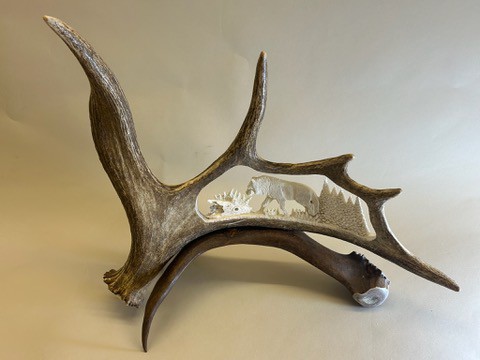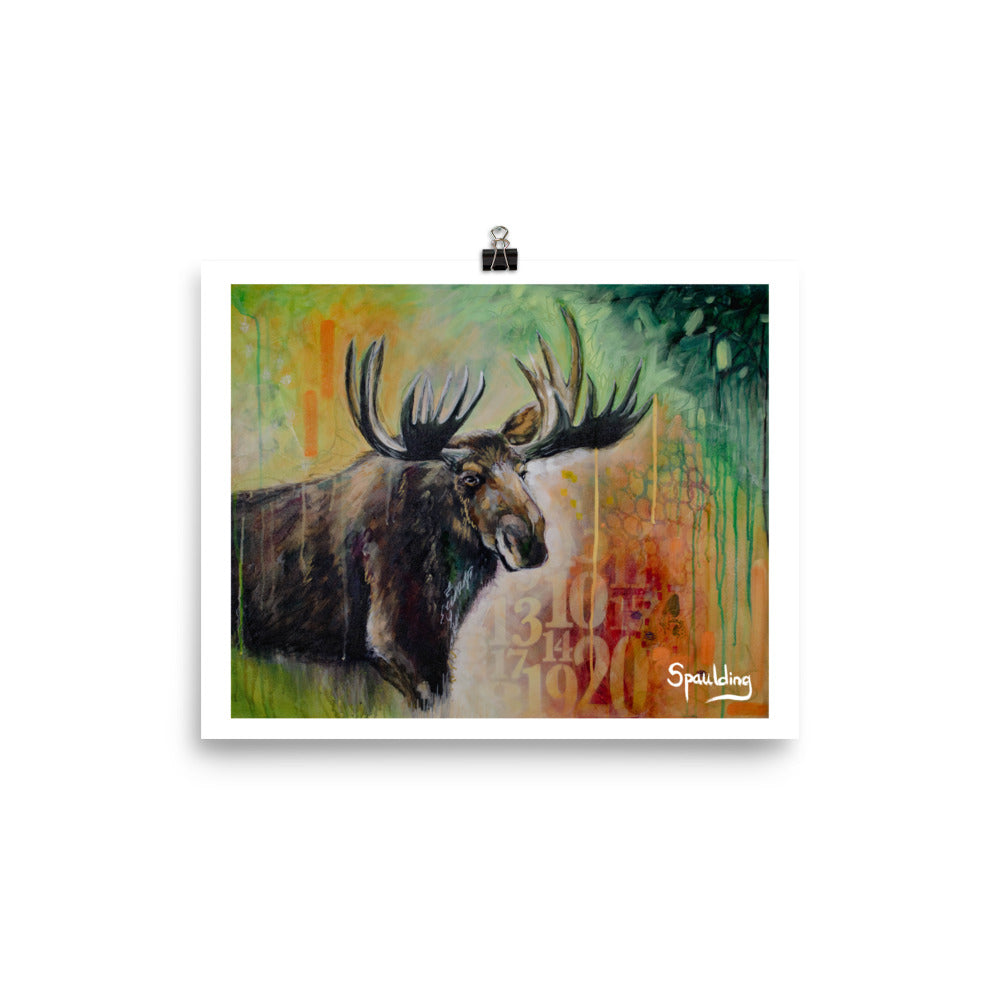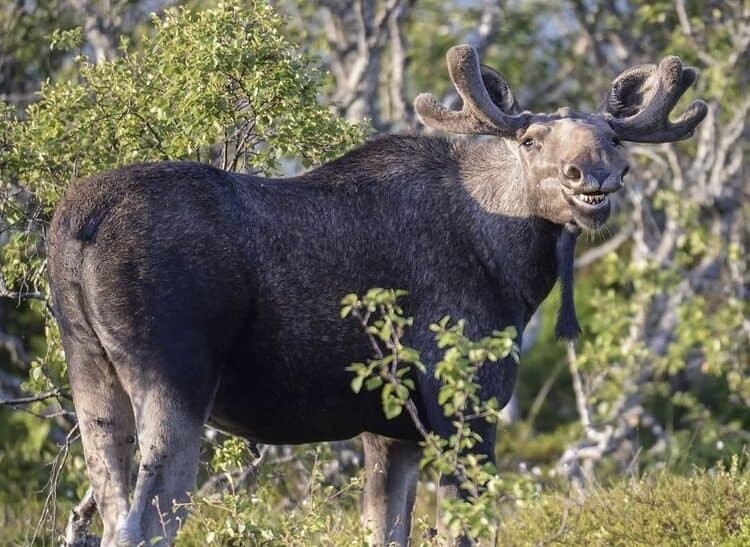Moose are found in North America, Europe, and Asia. They prefer forest habitats near water sources.
The majestic moose can be spotted in the wild across North America, Europe, and Asia. These large herbivores thrive in forested areas close to rivers and lakes, where they can find ample vegetation and water to sustain themselves. Due to their massive size and distinctive antlers, moose are iconic symbols of the wilderness in regions where they roam.
Their impressive presence and unique characteristics make them a popular subject for wildlife enthusiasts and photographers. With their massive bulk and powerful stature, encounters with moose in their natural habitat are awe-inspiring experiences for those lucky enough to witness these magnificent creatures firsthand.
The Habitat Of Moose
North American Moose Habitats
Moose in North America can primarily be found in forested areas such as coniferous forests and mixed forests.
- Moose prefer wetlands like marshes and swamps for feeding and cooling off.
- They also inhabit northern regions with cold climates where they can find ample vegetation.
Eurasian Moose Habitats
In Eurasia, moose are commonly found in areas with boreal forests and taiga habitats.
- Eurasian moose thrive in regions with dense foliage and plentiful water sources.
- They are known to inhabit high altitude mountain forests in certain parts of Eurasia.
Moose Population Distribution
In this blog post, we will explore the distribution of moose populations across different regions of the world.
North America
In North America, moose are predominantly found in regions with cold climates and abundant vegetation.
- Alaska has a sizable moose population due to its vast wilderness and suitable habitat.
- In Canada, moose are commonly found in forested areas and mountainous regions.
- Northern United States such as Maine, Minnesota, and Wyoming also have thriving moose populations.
Europe And Asia
In Europe and Asia, moose are known by different names such as elk or Eurasian elk.
- Scandinavian countries like Sweden and Finland have significant moose populations.
Table: Moose Population Distribution
| Region | Main Countries |
|---|---|
| North America | Alaska, Canada, Northern United States |
| Europe & Asia | Sweden, Finland |
Ecological Niche Of Moose
Moose, scientifically known as Alces alces, are majestic creatures that inhabit various regions across the northern hemisphere. Their ecological niche plays a crucial role in shaping their behaviors, feeding habits, and interactions with predators and threats. Understanding the ecological niche of moose provides valuable insights into their survival and impact on the surrounding ecosystem.
Feeding Habits
Moose are predominantly herbivores, with a diet primarily consisting of browsed vegetation such as young trees, shrubs, and aquatic plants. They are known to consume a significant amount of food daily, as much as 20 kilograms of forage. Their ability to feed on aquatic vegetation allows them to thrive in wetland areas, making them well-adapted to a diverse range of habitats.
Predators And Threats
Moose face a variety of natural predators and threats in their environment. Their primary predators include wolves, bears, and cougars. Additionally, parasites such as ticks and diseases like chronic wasting disease can pose significant threats to moose populations. Human activities such as habitat loss and hunting also contribute to their vulnerability.

Credit: www.uniqueantlerdesign.com
Human-moose Interaction
Moose are commonly found in the northern parts of North America, Europe, and Asia, with a population of around 1 million. They inhabit forested areas, preferring to be near lakes, marshes, and wetlands. Moose are generally solitary animals, but they can be found in small groups during the mating season.
Hunting And Conservation
One of the most significant aspects of human-moose interaction is the practice of hunting and conservation. Moose hunting is not only a popular recreational activity but also plays a vital role in wildlife management and conservation efforts. In many regions where moose are found, hunting is regulated through strict guidelines to maintain sustainable populations and protect the species from overhunting. These regulations often include restrictions on the number, size, and sex of moose that can be harvested each season. By implementing these measures, authorities ensure that hunters contribute to the overall health and balance of moose populations. Conservation efforts go hand in hand with moose hunting, as they aim to protect and preserve the habitats necessary for the survival of these majestic creatures. The funds generated from hunting licenses and permits are often reinvested in initiatives such as habitat restoration, research, and population monitoring. Through these conservation activities, both the moose population and their ecosystems benefit, contributing to the long-term sustainability of the species.Moose As Tourist Attractions
Moose have not only captivated the interest of hunters and conservationists but have also become a major draw for tourists. In regions where moose are found, visitors flock to witness these magnificent creatures in their natural habitat. The allure of observing a moose grazing or crossing a tranquil lake is a sight that lingers in the memories of those fortunate enough to experience it. To cater to this demand, many places with substantial moose populations have developed guided tours and wildlife viewing programs. These tours provide tourists with an opportunity to learn about moose behavior, ecology, and the importance of their conservation. Experienced guides navigate visitors through the moose’s territory, offering insights into their habits and leading them to prime viewing areas. These tours not only educate the public but also contribute to local economies, promoting sustainable tourism practices while safeguarding the well-being of the moose. Whether sought after for hunting or admired as awe-inspiring wildlife, the human-moose interaction continues to evolve in various regions where moose are found. From hunting regulations that promote conservation to the development of tourism industries centered around these majestic animals, humans are finding ways to coexist with the moose while also ensuring their survival for generations to come. As the world navigates the delicate balance between human needs and wildlife preservation, the significance of responsible human-moose interaction remains paramount.| H3 Headings | Content |
|---|---|
Hunting And Conservation |
One of the most significant aspects of human-moose interaction is the practice of hunting and conservation. Moose hunting is not only a popular recreational activity but also plays a vital role in wildlife management and conservation efforts. In many regions where moose are found, hunting is regulated through strict guidelines to maintain sustainable populations and protect the species from overhunting. These regulations often include restrictions on the number, size, and sex of moose that can be harvested each season. By implementing these measures, authorities ensure that hunters contribute to the overall health and balance of moose populations. Conservation efforts go hand in hand with moose hunting, as they aim to protect and preserve the habitats necessary for the survival of these majestic creatures. The funds generated from hunting licenses and permits are often reinvested in initiatives such as habitat restoration, research, and population monitoring. Through these conservation activities, both the moose population and their ecosystems benefit, contributing to the long-term sustainability of the species. |
Moose As Tourist Attractions |
Moose have not only captivated the interest of hunters and conservationists but have also become a major draw for tourists. In regions where moose are found, visitors flock to witness these magnificent creatures in their natural habitat. The allure of observing a moose grazing or crossing a tranquil lake is a sight that lingers in the memories of those fortunate enough to experience it. To cater to this demand, many places with substantial moose populations have developed guided tours and wildlife viewing programs. These tours provide tourists with an opportunity to learn about moose behavior, ecology, and the importance of their conservation. Experienced guides navigate visitors through the moose’s territory, offering insights into their habits and leading them to prime viewing areas. These tours not only educate the public but also contribute to local economies, promoting sustainable tourism practices while safeguarding the well-being of the moose. |
Conservation Efforts
Moose are mainly found in North America and Europe, where conservation efforts focus on preserving their natural habitats. These majestic creatures play a vital role in the ecosystem, making it crucial to protect their populations through various conservation initiatives.
Challenges
Despite their immense size and strength, moose face several challenges that threaten their survival. One of the key challenges is habitat loss due to human encroachment and industrial development. As the demand for land and resources increases, moose habitats, such as forests and wetlands, are being fragmented and destroyed.
Another significant challenge is climate change. Rising temperatures and altered precipitation patterns can impact moose populations in various ways. For instance, warmer winters can result in increased tick populations, leading to moose infestations and disease. Additionally, a changing climate can affect the availability and quality of food sources, impacting moose nutrition and reproduction.
Finally, moose are vulnerable to hunting and poaching. While hunting regulations and conservation efforts have been put in place in many regions, illegal hunting still poses a threat. Unregulated hunting and poaching can lead to overharvesting of moose populations, disrupting the delicate balance of ecosystems.
Success Stories
Despite the challenges they face, there have been notable success stories in moose conservation efforts. Many organizations and government bodies are actively working towards protecting moose and their habitats.
In some areas, effective habitat management programs have been implemented. These programs focus on preserving and restoring crucial moose habitats, ensuring sufficient food and shelter for their survival. By identifying and protecting key corridors and breeding grounds, these initiatives help maintain healthy and sustainable moose populations.
In addition to habitat conservation, hunting regulations have played a crucial role in moose population management. By implementing hunting seasons and quotas, authorities can control harvesting and prevent overexploitation. This approach ensures a sustainable balance between preserving moose populations and providing hunting opportunities for local communities.
Education and public awareness campaigns are also vital in moose conservation. By fostering a deeper understanding of the ecological importance of moose and their habitats, these initiatives encourage individuals to take actions that support their conservation. Public involvement in reporting illegal hunting activities and advocating for moose conservation has proven to be instrumental in their protection.

Credit: www.amazon.com

Credit: mariespauldingart.com
Frequently Asked Questions On Where Are Moose Found
Where Are Moose Found?
Moose are mainly found in the boreal forests of North America, including Alaska and Canada. They inhabit areas with dense vegetation, including marshes, swamps, and lakeshores, where they feed on aquatic plants. However, moose can also be found in parts of Europe and Asia, such as Sweden and Russia.
Conclusion
Understanding the habitats of moose is crucial for conservation efforts. By knowing where these majestic creatures are found, we can better protect their natural environments. From the vast forests of North America to the chilly landscapes of Scandinavia, moose can be found in diverse locations.



